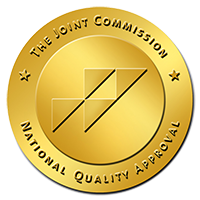Firearm Safety
At Home:
- Always treat your firearm as if it were loaded.
- Firearms should always be unloaded when not in use.
- Store your firearms in a locked cabinet, safe, gun vault or storage case when not in use, ensuring they are in a location inaccessible by children and cannot be handled by anyone without your permission
- Use a gun lock as an additional safety precaution (but not as a substitute for secure storage).
- Secure your ammunition in a different location from your firearms.
- Make sure that all children in the house understand guidelines concerning firearm safety. Have them sign the Project ChildSafe Pledge for young people—a reminder that if they find an unattended firearm in their home or a neighbor’s to not touch it, and tell an adult.
- Immediately after returning from hunting or shooting at the range ensure your gun is unloaded, then clean and place your firearm in its secured storage area.
- Educate everyone in your family about firearm safety.
- Visit the Project ChildSafe website for safety information and to find out where to get a free firearm safety kit in your area.
Traveling
As a gun owner you are responsible for its control at all times, even during travel. Locking the doors to your vehicle may not be considered adequate firearm securement. Here are some tips for traveling with a firearm.
- Unload your firearm prior to entering your vehicle. Perform a double check of this.
- Know precisely where the barrel of your gun is pointing at all times. Control of the direction the barrel is pointing.
- Store your firearm in a lockable gun case while traveling.
- There are many different types of lockable gun safes that fit in a vehicle that provide safety and also allow very quick access to your gun.
- Secure the lock box to the vehicle when possible.
- Never allow children to be in an area of the vehicle that allows them access to a firearm.
- Keep firearms and ammunition out of sight.
In the field/at the range:
- Always treat your firearm as if it were loaded.
- Firearms should be loaded only when you are in the field or on the target range or shooting area, ready to shoot.
- Never point your gun at anything you do not intend to shoot or destroy. Be particularly careful when loading or unloading a firearm.
- Never touch the trigger on a firearm until you actually intend to shoot.
- Unload your gun as soon as you are finished shooting.
- Know precisely where the barrel of your gun is pointing at all times. Control the direction the barrel is pointing, even if you lose your balance.
- Never walk through or climb over a fence with a loaded gun.
- Do not assume that the firearm will not fire because the safety is on. It is possible that a gun can fire at any time or even at a later time when you release the safety, without even touching the trigger.
- Always point the muzzle of your gun in a safe direction (a direction in which a bullet cannot strike anyone or anything.)
- The safe direction may be “up” or at times “down”, but never at anyone or anything not intended as a target
- When shooting wear ear and eye protection.
- Exposure to shooting noise can damage hearing. Shooting glasses also provide needed protection to your eyes.
- Never carry or place a loaded gun into a scabbard, a holster not being worn or a gun case.
- Use the correct ammunition for your firearm.
- Keep your finger outside the trigger guard until you are ready to shoot
- Always be sure of what your target is. Know what is in front of it and what is behind it.
- Occasionally, a cartridge may not fire when the trigger is pulled. If this occurs, keep the muzzle pointed in a safe direction. Keep your face away from the breech. Do not open the action for 30 seconds - or - Waite 30 seconds before opening the action. (injuries can occur when the action is opened and a misfire turns out to be a hang fire). Then, carefully open the action, unload the firearm and dispose of the cartridge in a safe way.
Cleaning:
- Always treat your firearm as if it were loaded.
- Firearms should always be unloaded when not in use.
- Always keep actions open when not using the firearm.
- The only time you can be absolutely certain that a gun cannot fire is when the action is open and it is completely empty.
- Know precisely where the barrel of your gun is pointing at all times. Control of the direction the barrel is pointing.
- Learn the mechanical and handling characteristics of the firearm you are using
- You should always read and refer to the instruction manual you received with your gun, or if you have misplaced the manual, simply contact the manufacturer for a free copy.
- Know how to field strip your firearm. Never allow ammunition to be present when cleaning your firearm.. Most cleaning solvents are hazardous. Be sure to store out of reach of children and unauthorized persons. Use only cotton material/rags and dispose of immediately. To minimize lead absorption always wash with cold soapy water after handling, shooting or cleaning a firearm.
- Be sure to store your firearm out of reach of children and unauthorized persons.
Gun safety locks
Having a gun in your possession is a great responsibility. You must know how to use, handle and store your firearm safely. Do not use any firearm without understanding its particular characteristics and safe use.
Gun locks can be obtained from the Box Butte County Sheriff office during normal business hours free of charge.
Reference: National Shooting Sports Foundation
http://www.projectchildsafe.org/sites/default/files/Firearms%20Safety%20in%20Vehicles.pdf



